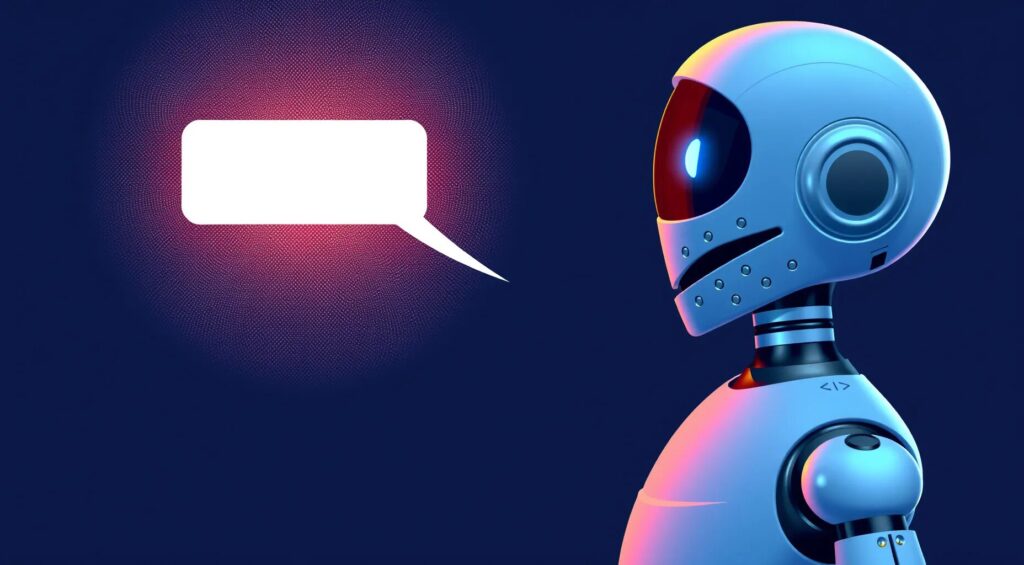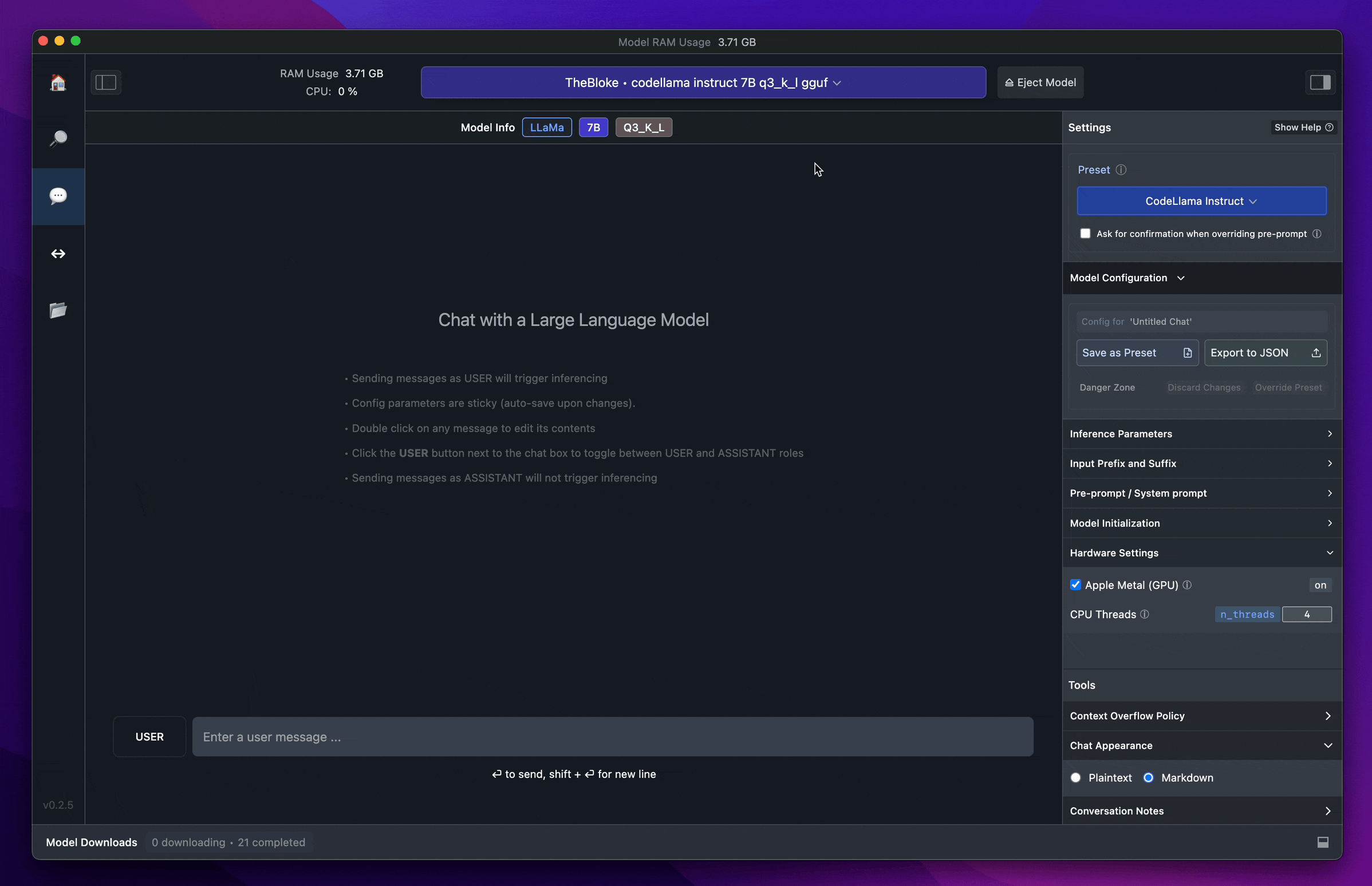
In today’s digital landscape, businesses are increasingly turning to AI-powered solutions to enhance customer interactions, streamline operations, and boost engagement. Among these solutions, AI chatbots stand out for their ability to provide instant, personalized responses at scale. Whether you’re looking to improve customer service, offer virtual assistance, or simply explore AI’s potential, creating a chatbot is an excellent place to start.
If you’re ready to dive into the world of AI chatbot development, LM Studio offers an intuitive platform that simplifies the entire process. This guide will walk you through every step, ensuring that by the end, you’ll have a fully functional AI chatbot ready for deployment.
Why Choose LM Studio for Building AI Chatbots?
Operating a local AI chatbot with LM Studio can be an effective way to provide instant support and enhance customer interaction within your specific geographical area.
Why Operate a Local AI Chatbot?
Operating a local AI chatbot offers several advantages:
- Targeted Support: Tailor responses to local needs, such as regional services, events, or language preferences.
- Enhanced Engagement: Provide personalized interactions that resonate more with local users.
- Cost Efficiency: Reduce the need for extensive customer service teams by automating common queries.
- Scalability: Once your local chatbot is successfully deployed, it can be scaled to cover more regions or expanded to include additional features. This scalability allows for growth and adaptation as your business or organization evolves.

Before we dive into the steps, let’s first discuss why LM Studio is a top choice for building AI chatbots. LM Studio is designed to cater to both beginners and experienced developers, offering a no-code environment that eliminates the need for complex programming.
The platform provides all the tools necessary for designing, training, and deploying chatbots, allowing you to focus on creating a chatbot that meets your specific needs.
Here’s what makes LM Studio stand out:
- User-Friendly Interface: With its drag-and-drop features, LM Studio makes it easy to design conversation flows without needing to write code.
- Powerful AI Tools: The platform offers robust AI models that can be customized and trained to fit your specific use case.
- Multi-Platform Deployment: Deploy your chatbot across multiple platforms like websites, mobile apps, and social media with ease.
- Scalable Solutions: Whether you’re building a simple chatbot or a complex virtual assistant, LM Studio can scale to meet your needs.
With that said, let’s get started on building your AI chatbot.

Image Credit: LM Studio
Step 1: Sign Up and Set Up Your Workspace
Creating Your Account
The journey begins with setting up your LM Studio account. Visit the LM Studio website and sign up using your email address. Once you complete the registration process and verify your email, you’ll gain access to the platform’s dashboard.
Setting Up Your Workspace
Upon logging in, you’ll land on the LM Studio dashboard. Here, you can create a new project, which will serve as the workspace for your chatbot. When naming your project, consider something descriptive and relevant, like “Customer Support Bot” or “Virtual Shopping Assistant.” This not only helps keep things organized but also sets the tone for your project.
Step 2: Define Your Chatbot’s Purpose and Scope
Understanding Your Chatbot’s Role
Before you start building, it’s crucial to define the purpose of your chatbot. What problem will it solve? Is it designed to handle customer inquiries, process orders, or perhaps assist with booking appointments? Having a clear understanding of your chatbot’s role will guide every subsequent decision you make.
For example, a customer service chatbot should be equipped to handle FAQs, track orders, and provide support for account management issues. Meanwhile, a sales assistant chatbot might need to recommend products, answer product-related questions, and assist with purchases.
Identifying Key Features
With the purpose defined, list out the key features your chatbot needs. Will it require integration with your CRM system? Does it need to handle multiple languages? These considerations will help you choose the right tools and set realistic expectations for your chatbot’s capabilities.
Target Audience Analysis
Understanding who will be interacting with your chatbot is essential. Consider the demographics, technical proficiency, and typical needs of your audience. A chatbot designed for tech-savvy users might use more complex language and offer advanced features, while a chatbot for a general audience should prioritize simplicity and clarity.
Step 3: Design Your Chatbot’s Conversation Flow
Structuring the Conversation Flow
With LM Studio, designing your chatbot’s conversation flow is straightforward. The platform’s drag-and-drop interface allows you to visually map out the chatbot’s interactions. Start by outlining the primary tasks your chatbot will perform. Think of each interaction as a conversation that begins with a user query and ends with a resolution.
Example: Customer Support Bot
- Greeting and Introduction: The chatbot welcomes the user and introduces its capabilities.
- Main Menu: The user is presented with options like “Track an Order,” “Get Product Information,” or “Speak to a Human.”
- Handling User Requests: For each option, create a detailed flow. For instance, the “Track an Order” flow might ask the user for an order number, then check the order status in your system and return the result.
- Error Handling: Design responses for when the chatbot doesn’t understand a query or cannot fulfill a request. This might involve offering alternative options or redirecting the user to a human agent.
Adding Natural Language Processing (NLP)
To make your chatbot more intuitive, integrate NLP features that allow it to understand and process user inputs naturally. LM Studio provides built-in NLP models that can be trained to recognize specific phrases and intents. For instance, a user might say “Where’s my package?” or “Track my order,” and the chatbot should recognize both as requests for order tracking.
Personalizing the User Experience
Your chatbot should have a voice—whether it’s formal, friendly, or humorous. The tone and style should align with your brand and resonate with your audience. You can program the chatbot to use personalized greetings, respond with empathetic language, or even crack a joke where appropriate. A well-crafted personality can make interactions more engaging and memorable.
Step 4: Train Your Chatbot
Gathering and Importing Data
To train your chatbot, you’ll need relevant data that reflects the types of interactions it will handle. This could include customer service transcripts, product FAQs, or conversational scripts. LM Studio allows you to import this data easily. The more data you provide, the better your chatbot will perform.
Example: Data Sources
- Customer Service Logs: Analyze previous customer interactions to identify common questions and responses.
- Product Descriptions and FAQs: Use product details and common questions to train the chatbot to handle specific queries.
- Conversational Scenarios: Create hypothetical conversations that cover various scenarios your chatbot might encounter.
Fine-Tuning the Model
Once your data is imported, you’ll need to train the AI model. This involves running your dataset through LM Studio’s training process, which helps the chatbot learn from the examples you’ve provided. After the initial training, test your chatbot’s responses to ensure accuracy and relevance.
Testing and Iteration
Testing is a critical part of chatbot development. After training, simulate real interactions by asking the chatbot various questions and tasks. Pay attention to how it handles unexpected queries or ambiguous language. Based on the results, you may need to refine the training data or adjust the conversation flows.
Common Testing Scenarios
- Ambiguous Queries: How does the chatbot handle vague or unclear questions?
- Complex Interactions: Can it manage multi-step processes like booking an appointment or processing an order?
- User Errors: Does the chatbot understand and correct common user mistakes, such as typos?
Step 5: Deploy Your Chatbot
Selecting the Right Platform
Now that your chatbot is trained and tested, it’s time to deploy it. LM Studio supports deployment across various platforms, including:
- Websites: Embed the chatbot on your website to assist visitors with navigation, product inquiries, and more.
- Mobile Apps: Integrate the chatbot into your mobile app to offer on-the-go assistance.
- Social Media: Deploy your chatbot on platforms like Facebook Messenger, WhatsApp, or Slack to reach users where they spend their time.
- Customer Support Portals: Use the chatbot as the first line of support on your helpdesk or customer service portal.
Choose the platform that aligns with your audience’s preferences and your business goals.
Integration with Existing Systems
For a seamless user experience, consider integrating your chatbot with existing systems like your CRM, e-commerce platform, or customer support tools. This allows the chatbot to access real-time data, such as customer order histories, product availability, or support ticket statuses, making it more effective in handling user requests.
Monitoring Performance
After deployment, it’s important to monitor your chatbot’s performance. LM Studio provides analytics tools that track key metrics like:
- User Engagement: How many users are interacting with your chatbot?
- Query Resolution Rate: What percentage of queries are being successfully resolved?
- User Satisfaction: How are users rating their experience?
Use this data to identify areas for improvement and to ensure your chatbot is meeting its objectives.
Step 6: Iterate and Improve
Gathering User Feedback
User feedback is crucial for the ongoing improvement of your chatbot. Encourage users to rate their experience or provide comments after interacting with the bot. This feedback can help you pinpoint specific issues, such as confusing responses or unhandled queries, and guide future updates.
Regular Updates and Retraining
AI chatbots need regular updates to remain effective. As your business evolves or as you receive new data, retrain your chatbot to ensure it continues to meet user needs. This could involve adding new conversation flows, updating existing ones, or integrating new data sources.
Scaling Up
As your chatbot proves its value, consider scaling its capabilities. This might involve expanding its language support, integrating it with more platforms, or adding advanced features like voice recognition or sentiment analysis. LM Studio’s tools are designed to grow with your needs, allowing you to enhance your chatbot over time.
Conclusion: Embracing the Future of AI Chatbots
Building an AI chatbot with LM Studio is not just a technical project; it’s an opportunity to revolutionize how your business interacts with customers. By following the steps outlined in this guide, you’ll create a chatbot that is not only functional but also engaging and effective.
The beauty of AI chatbots lies in their ability to continuously learn and improve. As you refine
your chatbot over time, it will become an increasingly valuable asset, capable of handling more complex tasks and providing more personalized experiences.
So, take the plunge into AI chatbot development with LM Studio. With the right tools and a clear plan, you’re well on your way to creating a chatbot that can transform your business and delight your users. The future of customer interaction is here—make sure your business is ready to embrace it.
Essential Resources for Building an AI Chatbot with LM Studio
Creating an AI chatbot using LM Studio’s tools is a powerful way to enhance customer interactions, but it’s important to equip yourself with the right resources to ensure success. Here’s a comprehensive list of resources that can guide you through every stage of the chatbot development process—from initial planning to deployment and optimization.
1. LM Studio Official Documentation
- LM Studio User Guide: The official user guide is a must-read for understanding the platform’s features, navigation, and functionality. It provides step-by-step instructions on setting up your workspace, designing conversation flows, and integrating your chatbot with various platforms.
- API Documentation: For advanced users who want to integrate their chatbots with other systems, the API documentation provides detailed information on available endpoints, authentication, and example requests.
2. Tutorials and Courses
- LM Studio’s Tutorial Videos: A collection of video tutorials that cover various aspects of chatbot creation, from basic setup to advanced customization. Visual guides can be particularly helpful in understanding complex features.
- Chatbot Development Courses: Platforms like Udemy offer courses on chatbot development that, while not specific to LM Studio, provide valuable insights into designing effective chatbots, understanding NLP, and improving user interactions.
3. Community Forums and Support
- LM Studio Community Forum: Engage with other users, share your experiences, and get answers to specific questions. Community forums can be a great place to troubleshoot issues and gain insights from fellow developers.
- Stack Overflow: A valuable resource for technical queries and programming-related issues. Use tags like “chatbot” or “LM Studio” to find relevant discussions and solutions.
4. AI and Chatbot Design Resources
- The Chatbot Guide: A comprehensive resource for understanding chatbot design principles, user experience, and best practices. Although not specific to LM Studio, the concepts covered are applicable to any chatbot development.
- NLP for Chatbots: An article from Towards Data Science that explains how Natural Language Processing (NLP) works and its significance in chatbot development.
5. Tools and Libraries
- Postman: For testing APIs and ensuring your chatbot’s integrations work seamlessly, Postman is a useful tool. It allows you to send API requests and examine responses.
- Google Analytics: Integrate Google Analytics with your chatbot to track user interactions, analyze performance, and gather insights on user behavior.
6. Books and Reading Material
- “Designing Bots: Creating Conversational Experiences” by Amir Shevat: A comprehensive guide to designing effective chatbots, including conversation design, user experience, and practical tips.
- “Chatbots and Conversational UI Development” by Michael K. Smith: This book offers an in-depth look at the development process of chatbots and conversational UIs, including practical insights and real-world examples.
7. Design and UX Resources
- Interaction Design Foundation: Offers resources on interaction design principles and user experience, which are crucial for designing intuitive and engaging chatbots.
- Adobe XD: A design tool for creating prototypes and visual designs of chatbot interfaces. While not specific to chatbot development, it helps in designing the user interface and experience.
8. Best Practices and Case Studies
- Chatbot Best Practices: A publication that provides insights into best practices, case studies, and the latest trends in chatbot development.
- Case Studies: Explore how other businesses have successfully implemented chatbots using LM Studio. These case studies can offer inspiration and practical examples of chatbot use.
9. Data Privacy and Compliance
- GDPR Compliance Guidelines: If you’re dealing with users in the European Union, ensure your chatbot complies with GDPR regulations. This resource provides detailed information on data protection and privacy laws.
- CCPA Compliance Resources: For businesses operating in California, understanding and implementing CCPA (California Consumer Privacy Act) regulations is essential. This resource provides guidance on compliance.